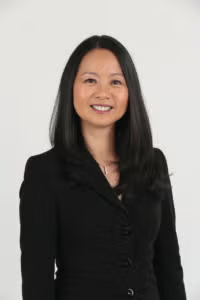 A recent national survey study of more than 1,400 U.S. internal medicine physicians found that physicians who regularly experience “sacred moments”—defined by the authors as “short periods of time that evoke powerful emotions and/or spiritual qualities of transcendence and boundlessness, as if time stood still”—are about 70% less likely to suffer extreme burnout; those who discussed such moments with a colleague also had lower burnout rates (JAMA Netw Open. doi: 10.1001/jamanetworkopen.2025.13159)
A recent national survey study of more than 1,400 U.S. internal medicine physicians found that physicians who regularly experience “sacred moments”—defined by the authors as “short periods of time that evoke powerful emotions and/or spiritual qualities of transcendence and boundlessness, as if time stood still”—are about 70% less likely to suffer extreme burnout; those who discussed such moments with a colleague also had lower burnout rates (JAMA Netw Open. doi: 10.1001/jamanetworkopen.2025.13159)
Explore This Issue
October 2025These moments buffered against emotional exhaustion and detachment, two of the three key dimensions that define Maslach’s description of burnout as a prolonged response to chronic emotional and interpersonal stressors on the job (Maslach Burnout Inventory. Maslachburnout.com).
My Experience with Burnout
As a physician leader and frontline pediatric otolaryngologist, I am consistently challenged by burnout, which I first faced 15 years ago. Intentional healing has led me to write, speak, mentor, and support others, encouraging the well-being of trainees and colleagues. The study prompted me to consider how clinicians can create meaningful moments. Refocusing on patient and parent interactions helped restore joy in my work after burnout. Previously, constant pressure, packed schedules, and a drive for perfection resulted in anxiety and exhaustion. Though those times now seem distant, I occasionally notice signs of slipping back into my old patterns.
When my book Safeguarding Physician Wellbeing: Using Checklists for Personal, Professional, and Psychological Safety came out last year, I summarized how we can use checklists and tangible actions to protect ourselves. The concept of sacred moments is an excellent tool that is easily accessible to all of us every day, at work and at home. Current policies are adversely affecting health prevention efforts, along with funding cuts to Medicare, Medicaid, education, and research. As a result, physicians and surgeons are at an increased risk of burnout due to mounting pressures to produce, provide care, achieve results, and serve not just their patients, but also their teams, hospitals, and institution Tools we can use to experience more joy, peace, contentment, and gratitude are essential, not only during the 10-12 hours of giving all that we have at work, but also when we go home. To take our physically and emotionally exhausted selves home to loved ones who need us, to give them the best versions of ourselves in the few hours left before sleep, we must recover throughout the day as well as once we are away from the work environment.
“Life is a collection of moments. Mindfulness is beautification of the moments.”—Amit Ray
Examples of Sacred Moments
I’m still working on increasing acceptance, being less reactive, and better managing high levels of frustration daily due to system issues amid too many “fires” while trying to just work in peace. Thankfully, I had learned to both create and become aware of sacred moments as my own armor against burnout. I wish I had learned this in medical school, residency, or fellowship. What changed my daily experience and made me a better physician was to experience each patient encounter and conversation with parents and caretakers with complete awareness. I learned to actively and generously listen, and make them feel seen, heard, and like they’re the most important patient to me, because they are.
While I can’t attest to whether my patients and their families, or my family and colleagues, felt the same, I can easily recall examples of sacred moments that filled my heart:
- A 13-year-old post-op tonsillectomy, T tube Down syndrome patient smiled and hugged me as soon as I entered the room. I hugged back fiercely. She would try to tickle my armpit, then giggle nonstop. I also hugged both the mother and grandmother. All three of us know the pure love of motherhood.
- A 24-year-old single ventricle complex cardiac patient with severe cirrhosis, severe septal deviation, and snoring. We connected as he taught me some cardiac physiology specific to his heart, explaining that patients who have had a Fontan procedure are at risk from CPAP and positive pressure ventilation. I shared with him the impact of obstructive sleep apnea on cardiac health.
- Joking around with my partners, or observing their banter with each other, laughter among the OR team during a case, a TEAMS meeting, an opportunity to interview candidates for other specialties, and even our division’s daily huddle. Being a part of any moment where humor is present, authentic care and support are given to one another, and countless moments enrich our busy day.
- After the most difficult or emergency cases, acknowledging each team member and expressing gratitude—those are sacred moments shared in relief once the patient is safe and the procedure comes to an end.
- This summer, after her first year of college, our daughter Claire lived with us in Akron. We cherished countless sacred moments: her sitting between us on the couch, watching a movie; at times, snuggling with me as if she were five again; hiking beautiful trails in Cuyahoga National Park and taking goofy selfies; making a dance TikTok together to KATSEYE’s dance song “Game Boy” (my husband Dave opted out).
While I experienced most of these sacred moments with other people, there are some I experience in solitude:
- Sitting in our small, screened porch, in the afternoon sun, feeling the warmth, drinking an iced coffee, and reading a book;
- Petting our 14-year-old Samoyed, looking into his soulful eyes, touching our foreheads together, telling him repeatedly how much we love and adore him; and
- Finally learning what a “reel” is on Instagram, how to watch what Claire sends me, and how to search for reels and send some back to her. Watching cute video messages expressing her love for me as her “mama,” then searching for even cuter ones to send back to her, makes me smile throughout the day.
Not only can we practice being aware and not miss an opportunity to turn any moment into a sacred moment, but we can also create them.
Micropractices and Moments
Dr. Jennifer Villwock and I defined “micropractices” as actions that can be readily integrated into daily life during pauses or events that already occur, to increase well-being and work–life integration (Otolaryngol Clin North Am. doi: 10.1016/j.otc.2021.05.007). Here are examples of “moments”:
- Hand sanitizing/washing in clinic between and for each patient;
- Scrubbing for cases;
- Lag time when logging into electronic health records;
- Waiting time for an elevator, riding the elevator, taking the stairs;
- Commute time; and
- Waiting for anything, in line for gas, grocery checkout, child pick up, next meeting.
Every day, we can recall sacred moments from our past, enhancing our well-being through the release of four primary “feel-good” hormones: oxytocin, dopamine, serotonin, and endorphins.
Facebook often reminds me of these memories through photos of my loved ones. Whenever I see images of Claire, Dave, or the three of us—whether from vacations or casual moments—I can’t help but smile and feel grateful. These happiness hormones can be boosted not only by a healthy diet, exercise, and laughter but also by recalling positive memories.
Gratitude plays a significant role in well-being. Studies show that healthcare workers who identified three good things daily for 15 days experienced improvements in emotional exhaustion, depression, happiness, and work–life balance.
Additionally, expressing gratitude is therapeutic. Consider sending cards, gifts, or notes to those you appreciate, both at work and in your personal life. Remember, eating chocolate can also help boost your happiness!
I continue to care for both healthy children with common ENT issues and highly medically complex ones with a vast spectrum of medical comorbidities (thus increased peri-, intra-, and post-operative risks). The latter population has parents and caretakers who face and struggle with far more complex psychosocial, emotional, systemic, and life challenges from caring for chronic and/or vulnerable patients with conditions that can’t be easily “cured” or “fixed.” Oral motor challenges, as well as developmental and speech delays, can’t be fixed by a surgical procedure. My greatest superpower as a physician and human has been realizing that what’s far more meaningful for the patients and families is not limited to or necessarily my skills as a surgeon. Instead, it’s always been a decision to share my whole “being” and willingness to be fully present in every interaction and commit whatever is within my control to support their journey.
I believe all of us, no matter how busy we are, can and must capture these “micro-moments” of joy. They are brief, accessible, and powerful. They don’t erase the challenges of medicine, but they remind us why we chose it—and they anchor us in presence rather than exhaustion.
Our work in medicine and surgery will never be free of pressure. The demands we face daily—urgent cases, overflowing clinics, late-night calls—are not going away. But what we can change is how we meet those demands, moment by moment.
Research tells us that brief, intentional pauses—whether through mindful breathing, gratitude, or meaningful encounters—lower stress hormones, increase resilience, and protect against burnout. But beyond the data, there is something profoundly human at stake. Each micro-moment of joy restores our capacity for presence, for empathy, and for connection. And those qualities—more than any prescription or procedure—are what patients remember most.
I often remind myself: Joy is not something that arrives only on vacation or after retirement. It is available to us now, in the sacred exchanges and small choices we make, even on our busiest days.
As physicians, our greatest gift is not only what we do for patients, but who we are with them. And when we choose to cultivate joy, in moments large and small, we honor not only our patients but also ourselves
Dr. Wei is the Alfred J. Magoline Endowed Chair in otolaryngology–head neck surgery, division director of pediatric otolaryngology at Akron Children’s Hospital, and professor of otolaryngology at the University of Cincinnati College of Medicine and Northeast Ohio College of Medicine in Ohio.

Sacred moments have been noticed and valued in the eyes of the beholder, Dr. Julie Wei. May she be a great teacher to all of us, so we discover and value these moment daily.
What a blessing she is!